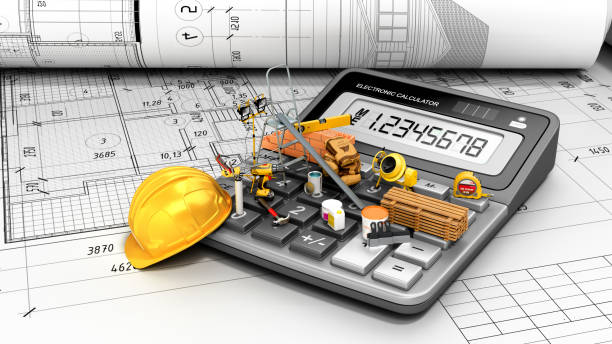For commercial interior construction safety, making sure projects move along on time is important for meeting deadlines and keeping everyone safe. This complete guide will show you the important steps you need to take to make a detailed project schedule that fits the needs of business interior build-outs.
In addition, we will show you new and easy-to-use software tools like CoreConstruct that are designed to make organizing easier and improve safety standards on-site. Come with us on this interesting journey as we look into improving safety standards and making your building projects more efficient.
Table of Content
What Is A Commercial Interiors Construction Schedule?
Elements of A Construction Schedule
1. Project Start And End Dates
5. Dependent Tasks In Special Order
Effective Scheduling Methods For Commercial General Contractors
● Program Evaluation And Review Technique (PERT)
How To Create A Commercial Interior Build-Out Construction Schedule?
● Off-Hours Construction Schedule
Review Of Best Construction Software Tools
Way To Creating A Workflow Structure
Collaborate and Communicate Schedules with the Project Team
Review and Refine the Construction Schedule
What Is A Commercial Interiors Construction Schedule?
A commercial interior construction schedule is like a conductor leading an orchestra; it gives detailed instructions for building your project. For a commercial interior build-out job, it carefully lists all the tasks and activities that need to be done. This schedule, like a good GPS, not only breaks down the complicated construction plan into manageable steps but it also keeps an eye on commercial interior building safety the whole time.
Keeping track of and eyeing every step of the work becomes the foundation of good project management, ensuring that each step is a step toward a better and more successful finish.
Check out how Schedule project management works in detail.

Elements of A Construction Schedule
When creating a construction schedule for a project, several key elements come into play to ensure a smooth and organized workflow.
Here’s a breakdown of the essential components that contribute to a successful construction timeline:
1. Project Start And End Dates
These serve as the bookends of your project, marking the beginning and conclusion of construction activities. Setting clear start and end dates is important for effective planning and getting everyone on the team to work together toward a shared goal while following strict construction company safety procedures.
2. Deadlines
Timely deadlines act as milestones that keep the project on track and accountable. They provide a sense of urgency and direction, motivating teams to work efficiently and effectively in line with established safety protocols.
3. Resource Management
Keeping track of resources like materials, workers, and tools is important for a smooth building process. Tasks are finished on time and within budget while strict commercial general contractor safety standards are met when resources are used efficiently.
4. Project Deliverables
Clearly defined project deliverables outline the specific outcomes and objectives that must be achieved at various stages of the construction process. This clarity helps maintain focus and ensures that safety procedures are integrated into every deliverable.
5. Dependent Tasks In Special Order
Identifying and sequencing dependent tasks in order is essential to maintaining workflow continuity. By structuring tasks logically and considering safety procedures throughout, you minimize disruptions and enhance overall project efficiency.
6. Task-Specific Durations
Assigning realistic durations to each task ensures proper time management and resource distribution. It allows for a structured approach to project planning, considering safety procedures at every step.
7. Project Documents
Managing essential project documents, these documents serve as reference points for safety guidelines and regulatory requirements, safeguarding the well-being of all individuals involved in the project. These include design plans, budgets, contracts, permits, change orders, and inspection records, vital for maintaining transparency and compliance throughout construction.
- Design Plans: Design plans are the foundational blueprints that guide the construction process, outlining the project’s vision and layout.
- Budgets: Budgets detail the financial allocations for the project, ensuring resources are managed effectively to meet objectives efficiently.
- Contracts: Contracts establish clear agreements between parties involved in the project, outlining responsibilities, terms, and expectations for all stakeholders.
- Permits: Permits are essential regulatory approvals for legal compliance with building codes and construction project regulations.
- Change Orders: Change orders allow for modifications to the project scope, addressing unforeseen circumstances or requested alterations during construction.
- Inspection Records: Inspection records document the quality checks and assessments conducted throughout the project, ensuring compliance with industry standards and regulations.

Effective Scheduling Methods For Commercial General Contractors
When managing construction projects, commercial general contractors utilize a range of proven scheduling methods to ensure smooth operations and timely completion while prioritizing construction company safety procedures and adhering to OSHA safety rules.
Here are some popular scheduling methods commonly employed in the industry:
● Critical Path Method (CPM)
CPM is like a strategic roadmap that identifies the critical tasks that must be completed on time to prevent delays in the project. By focusing on these vital paths while considering safety procedures, contractors can optimize project timelines efficiently.
● Program Evaluation And Review Technique (PERT)
PERT is a method that helps analyze and map out the sequences of tasks required to complete a project. By incorporating safety rules into the evaluation process, contractors can ensure that each task is executed safely and efficiently.
● Gantt Chart
A Gantt chart visually represents project schedules, outlining tasks and their dependencies over time. It provides a clear overview of project progress, allowing contractors to allocate resources effectively while constantly focusing on safety procedures.
● Last Planner System (LPS)
LPS emphasizes collaboration and communication among project teams to enhance workflow efficiency. By integrating safety rules into the planning process, contractors ensure that safety remains a top priority at every project stage, promoting a safe working environment for all involved.

How To Create A Commercial Interior Build-Out Construction Schedule?
Crafting a comprehensive construction schedule for commercial interior build-outs involves a strategic approach to ensure efficiency and compliance with commercial general contractor standards. Here are the essential steps to guide you through the process:
● Collaboration
Encourage everyone who has a stake in the project to work together to get useful information and a shared goal. Engaging in open communication and agreeing on project goals sets the stage for successful project execution while following safety measures.
● Ergonomic Floor Plan
Design an ergonomic floor plan that meets aesthetic requirements and prioritizes functionality and efficiency. Consider aspects like traffic flow, workspace optimization, and safety measures to create a space that aligns with client needs and industry standards.
● Preferred Security Features
Integrate security features that cater to the client’s specific requirements and adhere to safety regulations. Incorporating these security features from access control systems to surveillance measures ensures a secure environment for all occupants, which aligns with commercial general contractor guidelines.
● Off-Hours Construction Schedule
Strategically plan the construction schedule to include off-hours work whenever possible, minimizing disruptions to daily operations. This approach enhances productivity and demonstrates consideration for the client’s business continuity while focusing on safety protocols and regulations.

Review Of Best Construction Software Tools
In commercial general contractor operations, choosing the proper construction software tools is pivotal for efficient project management and ensuring commercial interior construction safety.
Here are some leading construction software options known for their capabilities in enhancing communication and coordination within construction projects:
● CoreConstruct
CoreConstruct is a popular choice for its communication-focused approach to project management. It allows commercial general contractors to coordinate seamlessly with clients, subcontractors, and team members, ensuring safety considerations are well-communicated and implemented throughout the project lifecycle.
● Smartsheets
Smartsheets is a versatile tool offering extensive project planning, collaboration, and resource management features. It enables commercial general contractors to streamline workflows, track progress effectively, and prioritize safety measures throughout the project lifecycle.
● Procore
Procore is a comprehensive construction management platform facilitating seamless communication and real-time collaboration among project teams. Procore empowers commercial general contractors to uphold safety standards while driving project success with features like document management, scheduling tools, and quality control modules.
● Gantt Pro
Gantt Pro is a user-friendly software that creates visual project timelines and schedules. This tool allows commercial general contractors to plan tasks, allocate resources efficiently, and incorporate safety procedures into every phase of the construction process, ensuring a safe and structured environment for all stakeholders involved.
Commercial general contractors can use these top construction software options to enhance project efficiency, promote effective communication, and prioritize commercial interior construction safety throughout their projects. Choose a software solution that aligns with your project needs and enhances workflow efficiency.

Shell Way To Creating A Workflow Structure
To create a well-defined workflow structure for your construction projects as a commercial general contractor, breaking down tasks into manageable work packages while prioritizing commercial interior construction safety is essential.
Here’s an example of structuring a work package for wall surfaces:
1. Framing: Begin by framing the walls, ensuring structural integrity and adherence to safety standards.
2. Drywall Installation: Proceed with the drywall installation, focusing on precision and quality artistry while maintaining safety protocols.
3. Drywall Finishing: Complete the finishing touches on the drywall, including taping, mudding, and sanding, to achieve a smooth surface finish, all while considering safety measures.
Estimate Task Durations
Estimate the time required for each task within the work package accurately to plan for efficient project management and scheduling, considering safety considerations.
Identifying Task Dependencies
Determine the interdependencies between tasks using various relationships such as Start-Start, Start-Finish, Finish-Start, and Finish-Finish to ensure a logical sequence of work and address safety requirements effectively.
Collaborate and Communicate Schedules with the Project Team
Working together as a team is important for any project’s success, and ensuring everyone’s plans are in sync is a big part. Project teams must work together and speak clearly to meet deadlines and meet project goals. Setting up clear ways to talk to each other, like regular meetings, emails, or real-time project management tools, is part of this collaboration. Team members can discuss their schedules, point out problems, and work together to find answers during these sessions.
By sharing information and timelines, everyone can stay up to date and make the necessary changes to keep the project on track. By promoting good communication and teamwork, project teams clear up confusion and hold each other accountable for reaching common project goals, which increases the chances of a successful and on-time effort.
Review and Refine the Construction Schedule
Construction plans must be efficient and on time. They must be reviewed and improved regularly to keep up with changed circumstances or unplanned problems. Project managers and team members should keep comparing work to the building schedule so that changes can be made as needed. When you compare real progress to planned milestones, you can see where improvements can be made.
During these reviews, things like the availability of resources, bad weather, and delays must be considered. This lets project managers change schedules or add more resources as required. It is very important to let the project team know about changes to the plan and what they need to do to help put them into action. Project teams can avoid delays, meet deadlines, and stay within budget by regularly reviewing and making changes to the building schedule.
Frequently Asked Questions
1. What steps are crucial when creating a commercial interior build-out project schedule?
Key steps include task sequencing, resource allocation, timeline estimation, and integrating safety measures for a successful schedule.
2. How can software tools such as CoreConstruct improve efficiency in commercial interior construction projects?
CoreConstruct streamlines communication, tracks progress, enhance collaboration, and ensures compliance with safety standards, boosting overall efficiency on-site.**
3. Why are OSHA safety rules important in commercial interior construction projects?
OSHA safety rules establish guidelines for worker protection, hazard prevention, and safety training, essential for maintaining a safe work environment.
4. Why is it necessary to regularly review and adjust project schedules for timely completion of commercial interior build-outs?
Regular review and adjustments help identify bottlenecks, address challenges proactively, and maintain project momentum, ensuring timely completion of commercial interior projects.
Wrapping up
So, making an efficient project schedule for commercial interior build-outs requires attention to detail, adherence to Commercial interior construction safety standards, and compliance with OSHA safety rules.
By following the essential steps outlined in this guide and utilizing innovative software tools like CoreConstruct, commercial general contractors can prioritize safety, optimize project timelines, and enhance overall project management efficiency.
Adopting these practices ensures project success and fosters a safe and secure work environment for all stakeholders involved in commercial interior construction projects. With the right approach and tools at hand, achieving a balance between safety, timeliness, and quality in construction endeavors becomes not just a goal but a tangible reality.




